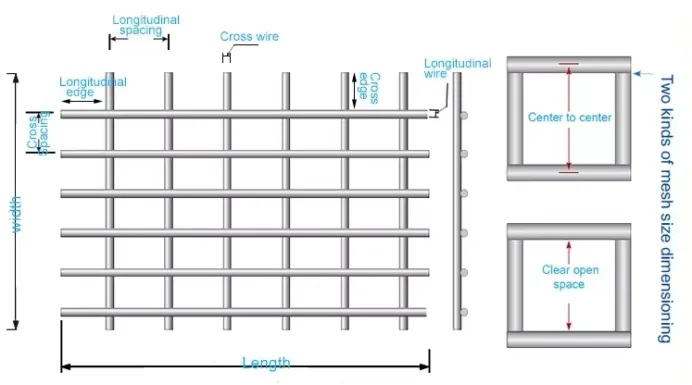Dec . 04, 2024 09:28 Back to list
rock cage retaining wall
The Rock Cage Retaining Wall A Sustainable Solution for Erosion Control
In the realm of civil engineering and landscaping, the importance of managing soil erosion and promoting stability cannot be overstated. Among various solutions available for retaining walls, the rock cage retaining wall, also known as gabion walls, stands out as an innovative and sustainable option. This article explores the benefits, construction process, and applications of rock cage retaining walls, highlighting their effectiveness in managing erosion and enhancing landscapes.
What is a Rock Cage Retaining Wall?
A rock cage retaining wall is a structure composed of wire mesh cages filled with rocks or other materials. The term gabion originates from the Italian word gabbione, which means big cage. These cages are typically made from galvanized steel or plastic-coated wire, providing durability against environmental factors like moisture and corrosion. Once filled with stones, these cages are stacked to create walls that can hold back soil, prevent erosion, and support various terrains.
Benefits of Rock Cage Retaining Walls
1. Erosion Control One of the primary functions of rock cage retaining walls is to prevent soil erosion. By stabilizing the soil, these walls minimize the risk of landslides and the resultant damage to surrounding property. They are particularly effective in steep landscapes where conventional solutions might struggle.
2. Drainage Management Unlike solid walls, gabion structures allow for natural drainage. Water can flow through the gaps in the rock cages, reducing hydrostatic pressure behind the wall. This characteristic significantly decreases the likelihood of wall failure caused by water accumulation.
3. Aesthetic Appeal Rock cage retaining walls can blend seamlessly into natural landscapes. The use of locally sourced rocks not only improves the visual appeal but also enhances the structural integrity of the wall. Over time, these structures can become habitats for local flora and fauna, further enriching biodiversity.
4. Cost-Effectiveness Compared to concrete or masonry walls, rock cage retaining walls are relatively inexpensive to construct. The raw materials (rocks and wire mesh) are often readily available, and the installation process requires fewer specialized skills and tools.
5. Environmental Sustainability The use of natural materials such as rocks contributes to a lower environmental footprint. Additionally, gabion walls can be constructed using recycled materials, promoting sustainability in construction practices.
Construction Process
rock cage retaining wall

The construction of rock cage retaining walls involves several key steps
1. Site Preparation The area where the wall will be built needs to be assessed and prepared. This includes clearing vegetation, grading the ground, and ensuring a stable foundation.
2. Materials Selection Choosing the right mesh and rocks is crucial. The mesh should be durable enough to withstand environmental stress, while the rocks should be of adequate size and weight to provide stability.
3. Cage Assembly The wire mesh is cut and shaped into cages, typically having dimensions between 1x1x1 meters and 2x2x2 meters. These cages are then securely fastened to maintain their shape.
4. Filling Cages Once assembled, the cages are filled with rocks. The filling process should be done carefully to ensure that the rocks fit snugly, providing maximum stability.
5. Stacking and Arranging The filled cages are stacked on top of one another. It is crucial to follow proper engineering principles to ensure that the wall is stable and can withstand the forces acting upon it.
6. Finishing Touches After stacking, additional landscaping can be done, such as planting vegetation around the wall or adding topsoil to enhance aesthetics and further prevent erosion.
Applications
Rock cage retaining walls are widely used in various scenarios, including roadways, agricultural land, landscaping projects, and coastal protection systems. Their adaptability makes them suitable for residential, commercial, and industrial applications, proving their versatility as an erosion control solution.
In conclusion, rock cage retaining walls offer a sustainable and effective option for managing erosion and enhancing landscape stability. With their aesthetic appeal and cost-effectiveness, they are becoming increasingly popular in modern engineering and environmental conservation efforts. As communities continue to face challenges related to erosion, embracing such innovative solutions will be essential for sustainable development.
-
The Role of Field Wire Fence in Grassland Conservation
NewsJul.15,2025
-
Stainless Steel Razor Wire Durability in Coastal Environments
NewsJul.15,2025
-
Enhancing Home Security with Mesh Fences
NewsJul.15,2025
-
Diamond Mesh Wire for Small Animal Enclosures
NewsJul.15,2025
-
Common Wire Nail Tensile Strength Testing for Woodworking
NewsJul.15,2025
-
Barbed Wire Corrosion Resistance Galvanization Techniques
NewsJul.15,2025









